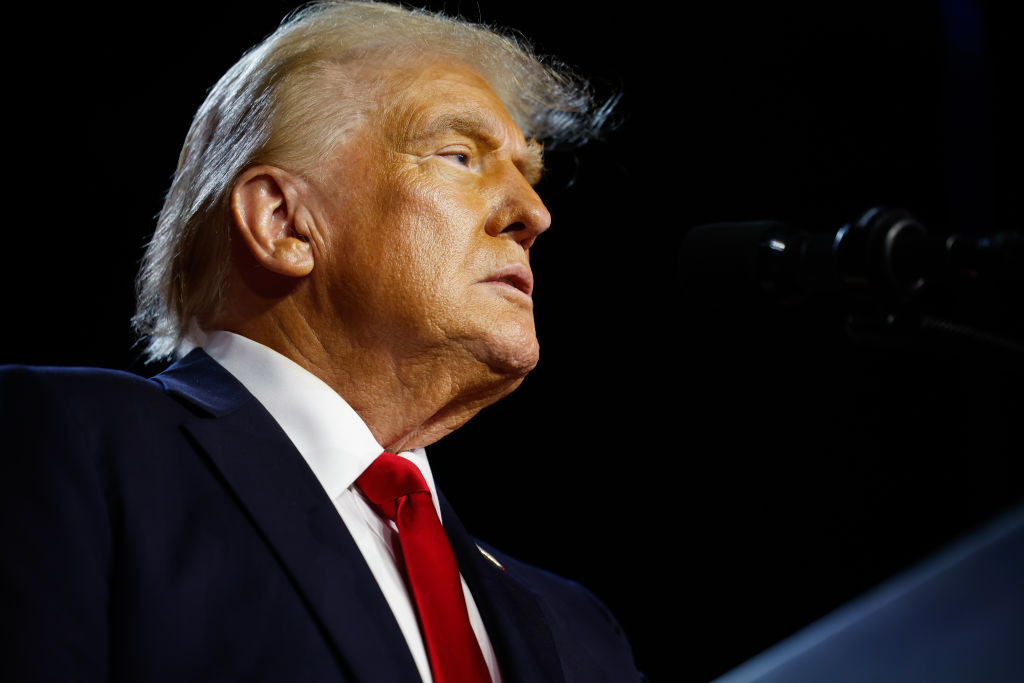Topline
President Donald Trump’s tariffs on Chinese imports are even higher than the 125% rate initially announced, as the White House confirmed Thursday there’s now a 145% tariff on many goods from China—and higher in some cases.
Key Facts
Trump announced Wednesday he was imposing a 125% tariff on Chinese imports in response to Beijing retaliating against his tariffs, after previously ratcheting up his tariffs on the country to 104%.
In an executive order published Thursday that codified that tariff increase, the White House said it was modifying previous executive orders on China to impose the 125% tariff rate.
That 125% tariff rate refers to this most recent round of tariffs rather than the tariff rate on Chinese goods overall, the White House confirmed Thursday, meaning that number does not include other tariffs that have previously been levied on China—most notably a 20% tariff that Trump levied because of China’s role in the fentanyl crisis.
That means a combined 145% tariff is now in place for many goods from China, though Trump’s more recent 125% tariff rate exempts some categories of imports, like copper, pharmaceuticals, semiconductors, lumber articles, certain critical minerals, and energy and energy products.
Loading...
The rate is even higher than 145% in some cases, as the White House confirmed to Forbes that other tariffs on China Trump imposed during his first term also remain in place, such as those on electronics, furniture, machinery and plastics, which range between 7.5% to 25%.
While the stock market rallied Wednesday after Trump paused broader tariffs on foreign imports, registering historic gains, stocks have fallen Thursday amid the continued uncertainty over Trump’s trade war and tariffs on China, with the Dow Jones Industrial Average dropping by nearly 1,500 points as of 12 p.m. EDT—which CNBC notes wipes out half the gains it made Wednesday.
How Has China Responded?
China imposed 84% retaliatory tariffs on U.S. imports on Wednesday, after the 104% additional rate took effect. That was before Trump hiked his tariffs up higher to 125% plus existing tariffs, however, and it’s unclear if Beijing could further raise its tariffs on the U.S. in response.
What Tariffs Are Now In Place?
In addition to the tariffs on Chinese imports, the Trump administration has also kept in place a baseline 10% tariff on most foreign imports, even as it paused higher tariffs on many countries’ goods for 90 days while the White House negotiates with other countries. Tariffs also remain in place on goods from Canada and Mexico, as Trump has imposed tariffs of up to 25% on a range of goods from those countries that are not exempted under the U.S.-Mexico-Canada Agreement. Canada and Mexico are not subject to the blanket 10% rate Trump imposed Wednesday.
Will Trump And China Negotiate On Tariffs?
Neither China nor the U.S. has shown any sign of backing down on their steep tariffs as the trade war between the two countries has escalated, though Trump told reporters Wednesday he hopes Chinese President Xi Jinping will ultimately negotiate. “I think President Xi is a very smart guy, and I think we’ll end up making a very good deal for both [countries],” Trump said. “We’ll get a phone call at some point, and it’ll be off to the races.” Foreign policy experts have been less sure that China will ultimately back down, with Daniel Russel, vice president for international security and diplomacy at the Asia Society Policy Institute, telling Politico that Beijing has so far taken the approach to “stand firm, absorb pressure and let Trump overplay his hand.” “Beijing believes Trump sees concessions as a weakness, so giving ground only invites more pressure,” Russel said.
Key Background
Trump’s tariffs fulfill a central campaign promise made by the president, who has repeatedly touted tariffs despite warnings from economists that imposing them would raise prices for U.S. consumers and harm the economy. Trump has long particularly focused his tariff efforts on China, launching a trade war against the country during his first term before making it one of the first targets of his tariff agenda after being inaugurated in January. The president has accused China of not doing enough to curb the flow of fentanyl into the U.S., and has more broadly targeted Chinese manufacturing, as he claims tariffs will help persuade companies to move manufacturing back to the U.S. China is the largest exporter of goods in the world and has been the second-biggest source of imports to the U.S. behind Mexico, with the two countries trading approximately $582 billion worth of goods in 2024.
Loading...
